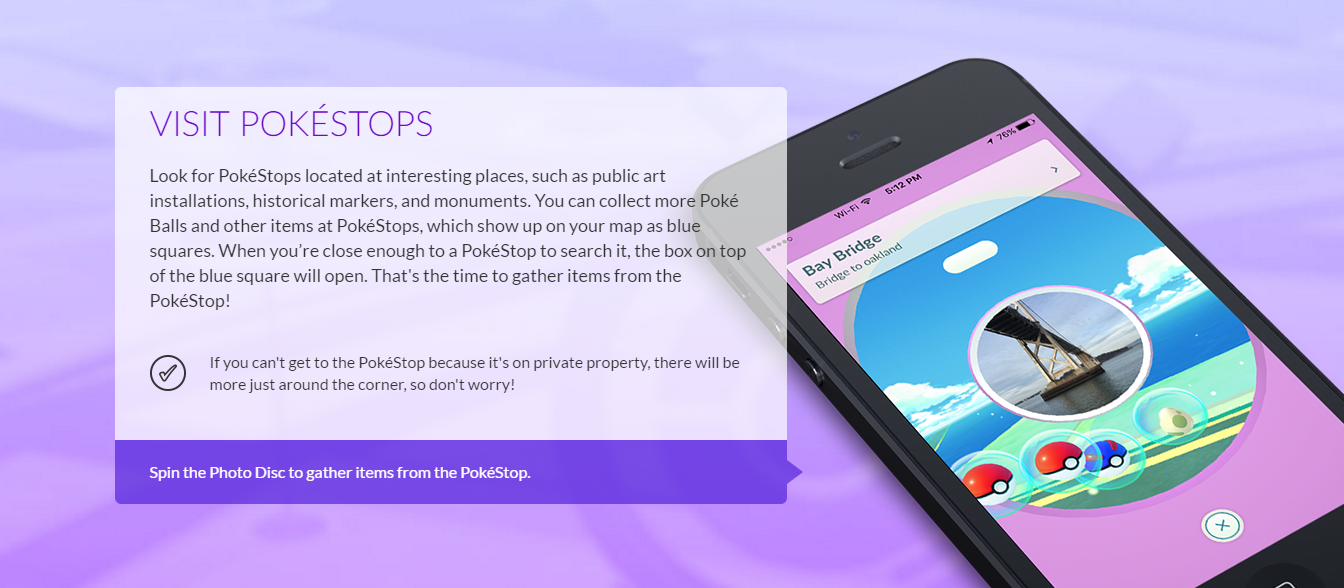Pokémon Go isn't about collecting Pokémon, it's about collecting places
To quickly recap the past week, the long awaited mobile spin-off of Nintendo’s perennially popular monster collecting RPG, Pokémon Go, was finally released to the world at large (whether officially or otherwise), and seemingly everyone with a smartphone is now racing to catch them all. That race is actually fairly literal in this instance, as Go’s hook is sending players to real world locals in order to discover what Pokémon have congregated around various landmarks. It’s a fantastic concept (albeit, dubiously effective here), but where Go both succeeds the most and misses its biggest opportunity is in this same conceit that makes it so compelling: exploring the area around you. I’ve been playing Go off and on over the past few days, and what immediately stood out to me as the most interesting element to it was that it caused me to become reinvested in the town I’ve been living in for nearly a year now. I’ll be frank, Maryville, TN, is not the most intriguing of cities. It’s relatively sparse, has few notable landmarks, and in some cases is more urbanized town than city proper. Some of these reasons aren’t inherently bad, and in many ways are a primary source of why I love living here so much, which I sincerely do. They do, however, present a somewhat limited landscape with which to engage and explore, and after nearly a year I have become what feels like just a little too familiar with the various points of interest around me. In only the few days I’ve been playing Go though, I’ve begun to see my city with fresh eyes.
Let me back up quickly though and talk a bit more about Go itself. If you have missed the torrent of coverage, or have yet to download the game for yourself, Pokémon Go’s primary gameplay involves traveling to different points of interest on a map, be they shops, historical landmarks, or churches, and then attempting to find and capture Pokémon to then level up and use to capture and hold gyms (which are placed at what the game considers especially noteworthy sites). What results from this is a lot of on-foot urban exploration, and this element in particular is why I continue to be so enamored with the game, as I find myself walking into parts of my city I’ve never seen and happening upon shops and sites I never knew existed. It sounds silly that it would take a videogame to get me to deviate from my daily commute and see more of the area around me, and yet just having that much more of an incentive to do so has given me a renewed interest in taking detours simply to see what's down a given street or what sort of shop is around the corner. It's an incredibly smart use of a smartphone's constant connectivity, and yet at the same time, I am disappointed at how little Go taps into what would appear to be its biggest selling points.

Although Go populates the area around you with no shortage of Poke-Stops – points which, when you come near, disperse various items – they exist as little more than pit-stops with which to stock up on your supply of requisite Poke-balls. With so much of Go’s appeal hinging upon compelling you to get out and about wherever it is you reside, it is frustrating that there is so little to be found once you are actually there. Even a simple registry of places you’ve explored would present a bigger draw to do more than circle the same three stops every time you run out of items, and would align with Pokémon’s collecting obsession.
Imagine, though, the ways Go could use locations to cause you to actually engage with the world outside your phone. For instance, perhaps small businesses could opt-in to becoming trading outposts, causing people within the same area to congregate together to swap Pokémon, and giving you a reason to stay and look around longer than the time it takes to spin the marker for a few potions. Or maybe certain locations could be used to house and revive your Pokémon, giving you an incentive to return to them or simply wait around while they recover from a battle. Pokémon has long used locations within its own world for purposes more engaging than item shops, so Go shouldn’t even have to look far to find ways in which to apply that same geographic intrigue to a game that is entirely about real world travel and exploration.
What is especially weird about how developed Niantic has stripped locations in Go of their identity, save a title card and a blurry photo pulled from Google Maps, is that they are also the developer of an app entirely devoted to helping you find interesting places around you. Niantic's Field Trip more or less operates like Go without the Pokémon, populating a map with interesting locations around you and giving you a bit of insight into why a given place is worth your time. Why this same passion for undiscovered geographical points of interest isn't present in Go is a mystery, as it would appear most of what Niantic needs is already before them (and they are already using previous apps to help inform Go's landmarks).
If nothing else, Pokémon Go has managed half the battle in getting me (and it would seem thousands of others) on my feet and out the door to walk around and become familiarized with an area I felt I had already seen to its fullest. I only wish it had gone the extra step and given me a reason to look up from my phone and get to know the places it uses as the backbone of its design, only to immediately discard them as virtual vending machines, each as identical and impersonal as the last.

